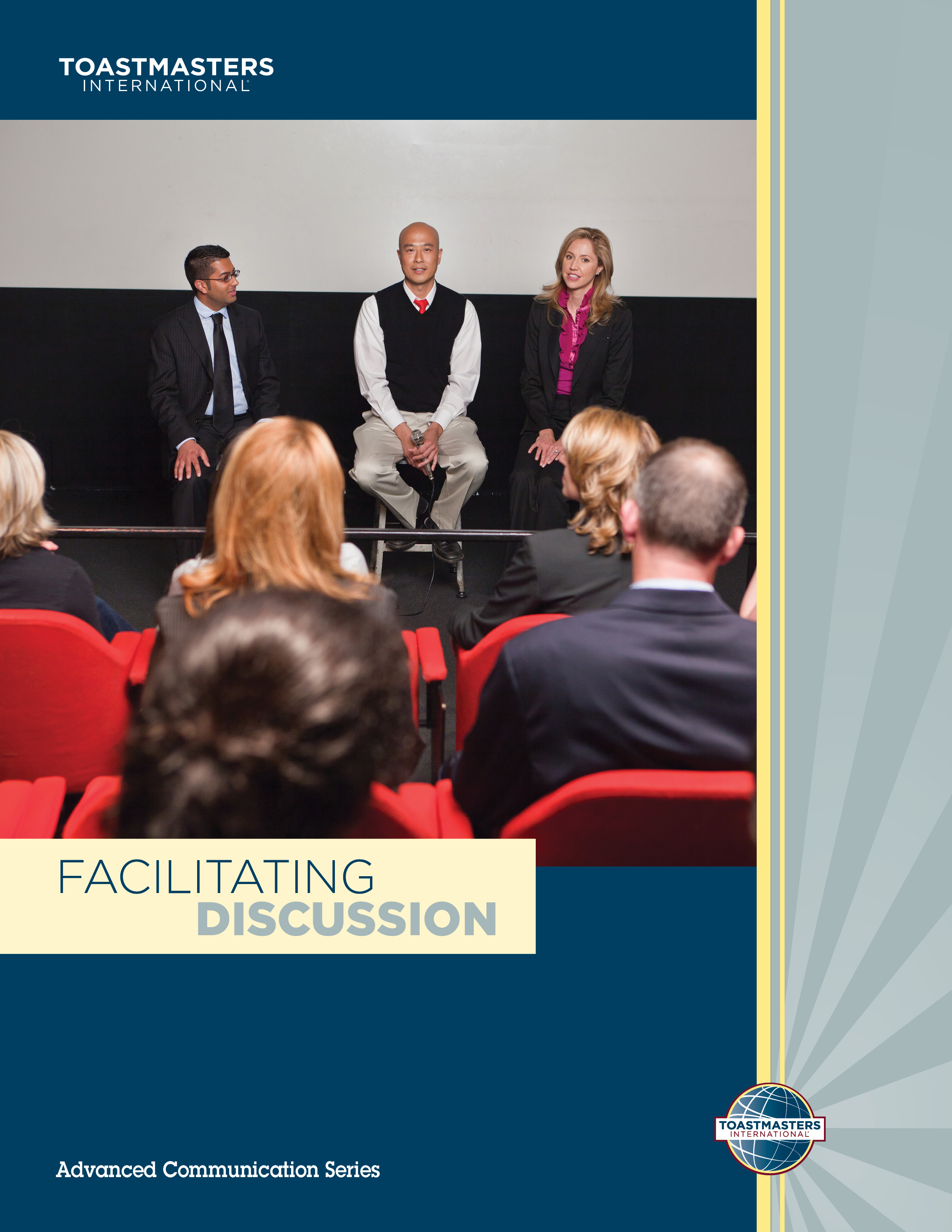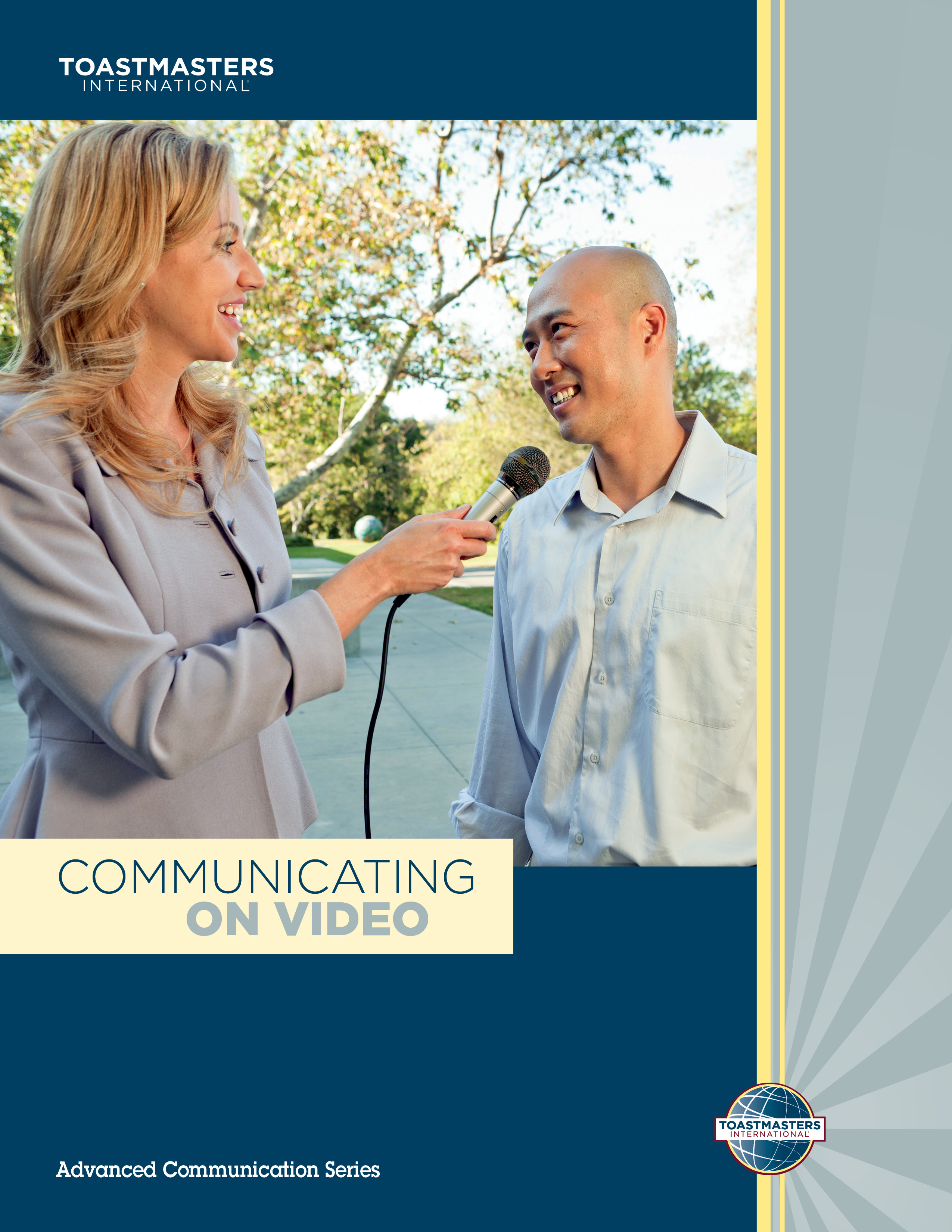Communicating on Video. Video presentations require special preparation and attention to details. Learn how to present an editorial, appear as a guest on an interview program, be the host of an interview program, conduct a press conference and use video to train.
Project #1: Straight Talk
Executive Summary:
An editorial is an opportunity to influence public opinion and action on an issue. It doesn't just draw attention to an issue, it makes a point about that issue. Because it is a brief, you much choose words and information carefully. Make sure your editorial clearly states your position, contains evidence to support that position and is logically developed.
Objectives:
- To effectively present an opinion or viewpoint in a short time.
- To simulate giving a presentation as part of a television broadcast.
- TIME: 3 minutes, plus or minus 30 seconds.
Note to the Evaluator:
For this project, the speaker was asked to prepare and present an editorial designed for an on-camera presentation. The editorial should clearly present the news event or current issue that it addresses, and present a reaction or stand to the event or issue. Although the presentation may be recorded on video, your evaluation will be based on the live presentation. However, it is suggested you review the video later with the speaker and discuss how effective the presentation would have been had it actually been broadcast. It is suggested you read the entire project and the appendix before you hear the presentation.
Project #2: The Interview Show
Executive Summary:
Talk shows, podcasts, and live streaming video are common today, and more people are needed as guests. If you're invited to appear on a show, prepare carefully. Know the interviewer's purpose, the reason for your appearance, the interview's length, the interviewer's identity and who your audience will be. Anticipate questions and prepare responses. During the interview, be enthusiastic, stay calm, listen carefully and be yourself.
Objectives:
- To understand the dynamics of an interview or “talk” show.
- To prepare for the questions that may be asked of you during an interview program.
- To present a positive image on camera.
- To appear as a guest on a simulated video talk show.
- TIME: 5 to 7 minutes.
Note to the Evaluator:
The speaker was asked to appear as a guest on a simulated talk show, with another club member serving as the talk show host or interviewer, and the rest of the club acting as the studio audience. The speaker was to answer questions asked by the interviewer. Questions were to be based on the expertise of the speaker in a predetermined subject. Although the presentation may be videorecorded, your evaluation will be based on the live presentation. However, it is suggested that you review the video later with the speaker and discuss how effective the presentation would have been had it actually been broadcast. It is suggested you read the entire project and the appendix before you hear the presentation. Remember, you will be evaluating only the guest, not the host.
Project #3: When You're The Host
Executive Summary:
A talk show host must be knowledgeable about each guest, be able to phrase questions well, be able to handle different personalities, and make guests feel relaxed and comfortable. Carefully prepare for an interview, finding out as much as possible about the guest and the topics to be discussed. Consider your audience's knowledge of the guest and subject and phrase questions accordingly.
Objectives:
- To conduct a successful interview.
- To understand the dynamics of a successful interview or talk show.
- To prepare questions to ask during the interview program.
- To present a positive, confident image on the television camera
- TIME: 5 - 7 minutes.
Note to the Evaluator:
The speaker was asked to appear as a host on a simulated talk show, with another member serving as the guest. The speaker was to conduct an interview, asking questions of the guest and maintaining a smooth flow of conversation. Questions were to be based on the expertise of the speaker on a predetermined subject. Although the presentation may be videorecorded, your evaluation will be based on the live presentation. However, it is suggested that you review the video later with the speaker and discuss how effective the presentation would have been had it actually been broadcast. It is suggested you read the entire project and the Appendix before you hear the presentation. Remember, you will be evaluating only the host, not the guest.
Project #4: The Press Conference
Executive Summary:
Business and government officials sometimes are asked to be spokespersons for their organization, commenting on various issues. During a press conference you give a prepared speech on the issue, then field questions from journalists. Make sure you are familiar will all the available information about the issue. Answer all questions in a positive manner, speak in sound bites, remain calm, and conclude the conference with a positive statement.
Objectives:
- To understand the nature of a video broadcast press conference.
- To prepare for an adversary confrontation on a controversial or sensitive issue.
- To employ appropriate preparation methods and strategies for communicating your organization’s viewpoint.
- To present and maintain a positive image on television.
- TIME: 3 to 5 minutes for presentation, 2 to 3 minutes for question period.
Note to the Evaluator:
The purpose of this talk is to make a presentation on a controversial issue or situation concerning the speaker’s company or other organization he or she represents. The speaker then will conduct a question-and-answer period. Throughout the speech and question period, the speaker is to build and maintain a positive image for himself or herself and the company or organization. Although the presentation may be videorecorded, your evaluation will be based on the live presentation. However, it is suggested that you review the video later with the speaker and discuss how effective the presentation would have been had it actually been broadcast. Please read the entire project and the Appendix before you hear the presentation.
Project #5: Instructing On The Internet
Executive Summary:
The Web is a useful training medium because you can use it to visually demonstrate the skills being taught. As you prepare a training program, determine your objectives, then your audience's knowledge of the subject and compare it to what you want them to know. Then plan your training program accordingly. Select the best strategy to provide this information, then create a script.
Objectives:
- To learn how to develop and present an effective training program on the Web.
- To receive personal feedback through the videotaping of your presentation.
- TIME: 5 to 7 minutes for the presentation, plus 5 to 7 minutes for playback of the videotape.
Note to the Evaluator:
In this project, the speaker is to present a training program on how to prepare and present a speech. The presentation will be recorded on video and played back during the meeting. You and a panel of three other evaluators, under the direction of the general evaluator will evaluate only the video playback of the presentation. You will evaluate the effectiveness of the training program and the speaker’s performance on video. Please read the entire project and the Appendix before you view the presentation.
For more information:
Item 226J

